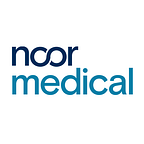Medical instrument sterilization and communicable disease control
Healthcare–associated infections affect patients, doctors and visitors of healthcare facilities. The incidence of these infections arises not only during hospitalization and treatment, but may also occur after the discharge of patients. Thus, there exists a considerable health risk for patients as well as care workers within the time spent in health institutions.¹
Determinants for healthcare related infections include inappropriate environmental conditions, poor infrastructure, the number of patients as well as deficiencies in procedural guidelines for hygiene practices and infection control measures.
History of sterilization as control measure
Historically, sterilization by heat has been used in early medical practices, dating back to 1679.² Later, steam sterilizers have been used in a laboratory context, for example to prepare tuberculosis serum in Germany. Since “surgical site infection is the leading infection in settings with limited resources, affecting up to one-third of patients”¹, aid agencies considered portable steam autoclaves in the 1990s, with which medical instruments could be sterilized under the control of heat and steam generation³. Researchers have been interested in context adapted autoclaves since the mid 70s, yet these innovations have not resulted in commercial application. Noor Medical’s hybriclave is an effective steam sterilization solution that can operate with a diversity of energy inputs, including solar-thermal energy.
The case of HIV, hepatitis and other diseases transmitted by fluid to fluid contact
Communicable diseases spread through contact. One infectious disease that has been researched for over 30 years is Aids. It puts patients at a higher risk of respiratory, bloodstream and urinary tract infection in healthcare settings due to the immune-suppression.⁴
In their guidelines on effective Aids prevention, the WHO states that „heat is the most effective method for inactivating HIV. Steam sterilization entails the destruction of all microbes, including bacterial spores and is thus more apt than chemical disinfection. According to UN Aids, about 5,000 new infections of the HIV virus occur every day.⁵ Since it is only transmitted via bodily fluids, proper medical instrument sterilization is an effective prevention against device-related transmission — and the avoidance of HIV communicability at healthcare facilities. Via providing an effective medical instrument sterilization solution for low resource settings Noor Medical contributes to the prevention of infectious diseases such as Aids.
To learn more about Noor Medical please visit our website: www.noor-med.com or follow us on facebook, linked in, twitter and instagram.
References:
1) WHO factsheet on Health Care-Related Infections http://www.who.int/gpsc/country_work/gpsc_ccisc_fact_sheet_en.pdf
2) Britannica Encyclopedia https://www.britannica.com/technology/autoclave
3) WHO Guidelines for autoclaves 1989 http://apps.who.int/iris/bitstream/handle/10665/250232/9789241549851-eng.pdf;jsessionid=888E2504AE5494DD2E74F0520740A3F1?sequence=1
4) Mitha, M., Furuya, E. Y., & Larson, E. (2014). Risk of healthcare associated infections in HIV positive patients. Journal of Infection Prevention, 15(6), 214–220. http://doi.org/10.1177/1757177414548694
5) UN Aids 2017 http://www.unaids.org/en/resources/documents/2017/2017_data_book
6) WHO Guidelines on effective prevention of HIV http://apps.who.int/iris/bitstream/handle/10665/41538/WHO_AIDS_2.pdf?sequence=1&isAllowed=y
Article written by Verena Jana Hartleitner
